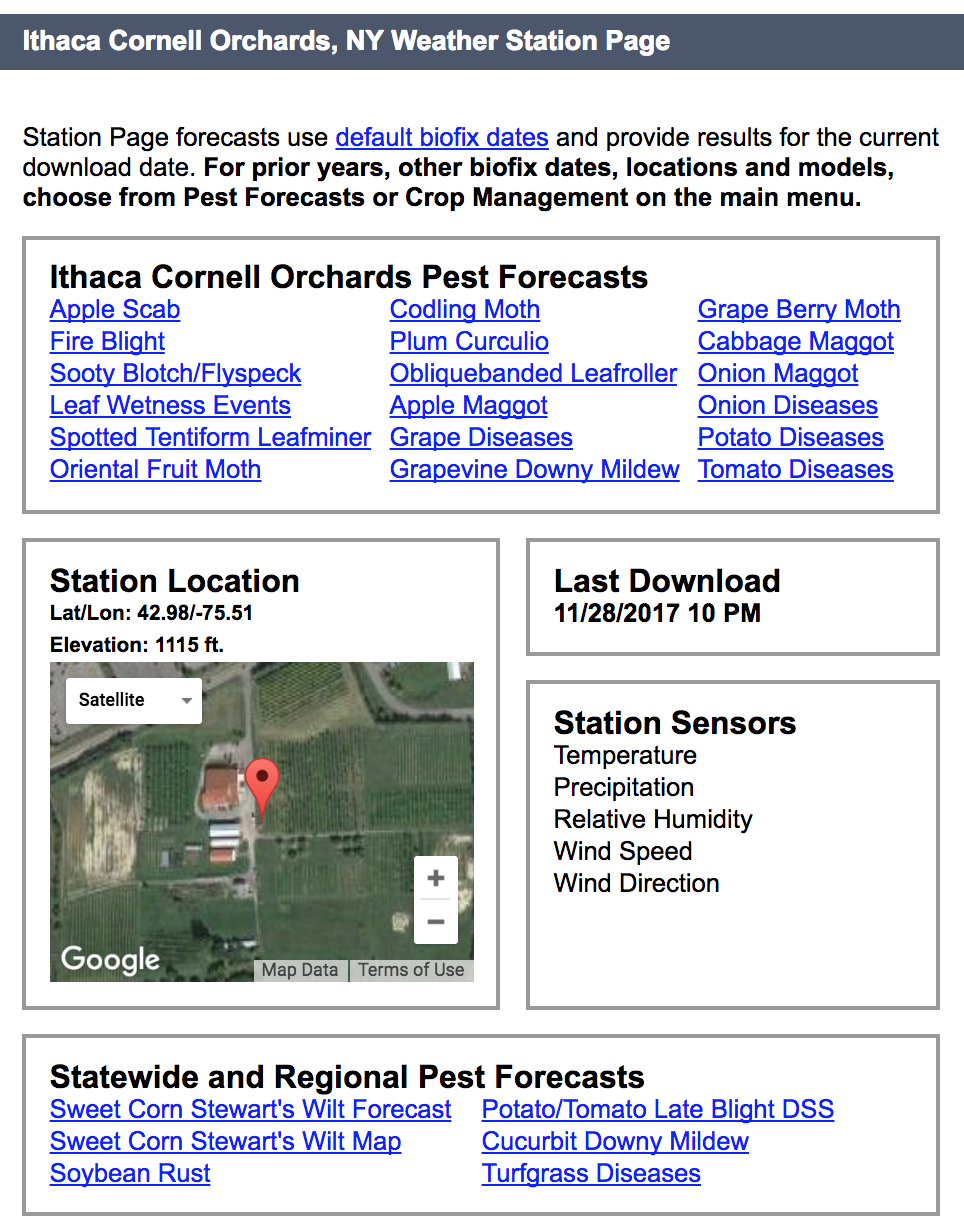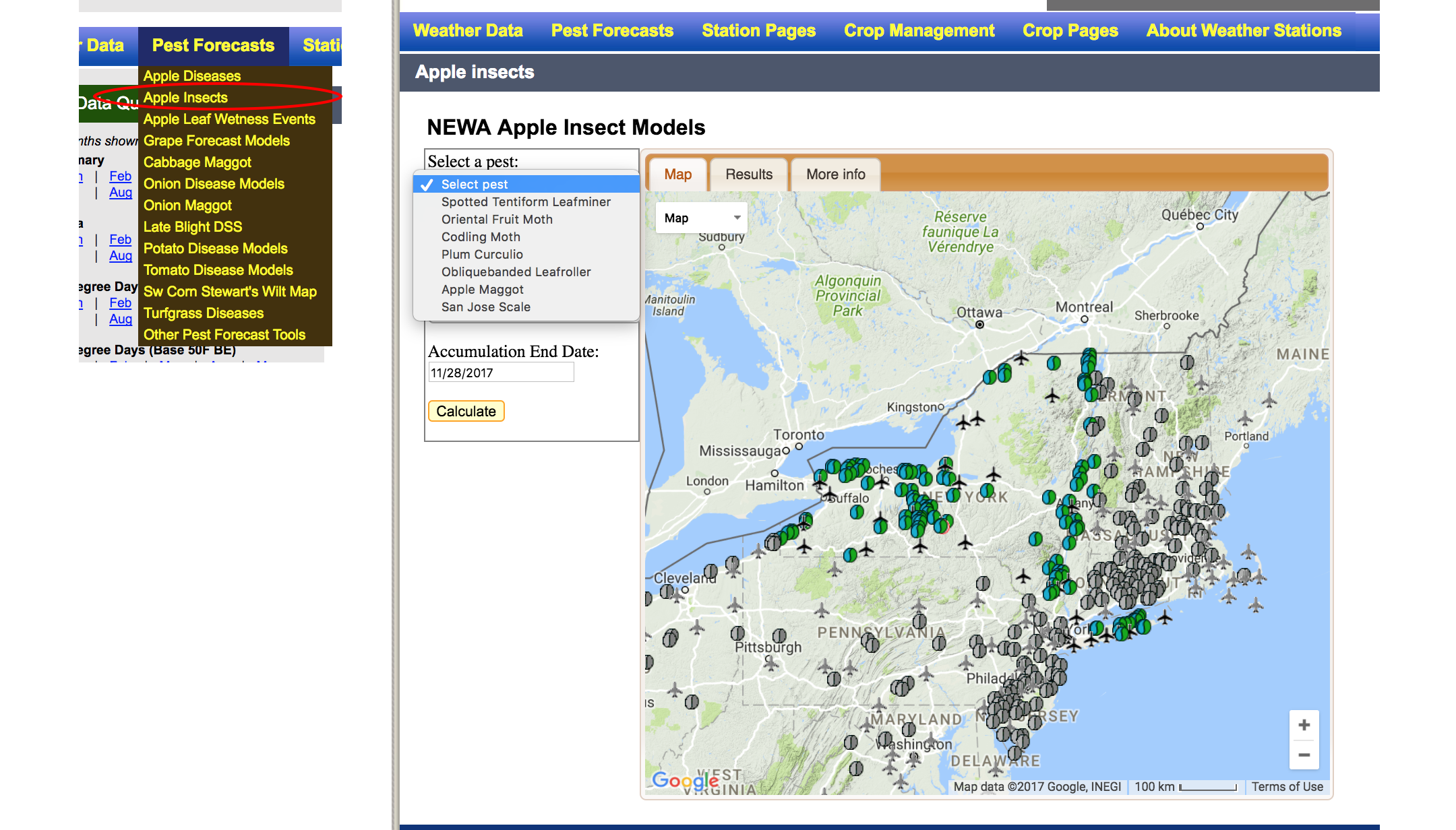Let’s take a closer look at how degree days are used on NEWA. My last post explained what they are, how they are calculated, and why they are used. But where and in what ways can they be accessed?
Every NEWA weather station has a unique ‘home page’ (Figure 1). This is an easy way to access degree day models during the growing season. When you follow a model link from the station page, results are automatically generated using data from that location.

Figure 1. This is the station home page for ‘Ithaca Cornell Orchards’ in New York State.
Degree-day models are also accessible from the navigation drop-down menus (Figure 2). This method requires user input to specify the station and location of interest. This gives you an opportunity to explore historical data, which is not an option when a model is accessed from a station home page as described above.

Figure 2. NEWA degree day tools can be accessed from the navigation drop-down menus.
The NEWA degree day calculator is a popular tool (Figure 3). Once the state, location of interest, desired base model, and start date is specified, custom degree day calculations are generated. For example, when a pre-programmed model is not available you can use the calculator as long as you understand which base temperature is needed. For more information about the degree day calculator, read this great post from April 2016 that provides more details. https://blogs.cornell.edu/yourenewa/2016/04/08/new-degree-day-calculator-on-newa/

Figure 3. The NEWA degree day calculator is a popular tool that provides customized calculations.
Here is a summary of current NEWA models and tools utilizing degree day calculations.
| Category | Model | Base temperature |
| Degree day calculator | Customized degree day accumulation | User defined |
| Degree days | Degree day monthly summaries | User defined |
| Apple insects | Apple maggot | 50°F/10°C |
| Codling moth | 50°F/10°C | |
| Obliquebanded leafroller | 43°F/6.1°C | |
| Oriental fruit moth | 45°F/7.2°C | |
| Plum curculio | 50°F/10°C | |
| Spotted tentiform leafminer | 43°F/6.1°C | |
| Apple diseases | Fire blight shoot symptom development | 55°F/12.8°C |
| Apple Scab | 32°F/0°C | |
| Grape | Grape berry moth | 47.14°F/8.4°F |
| Vegetable | Cabbage maggot | 39.2°F/4°C |
| Onion maggot | 40°F/4.4°C |
For additional information about degree days on NEWA visit the URL link below.
| About Degree days | http://newa.cornell.edu/index.php?page=about-degree-days |

